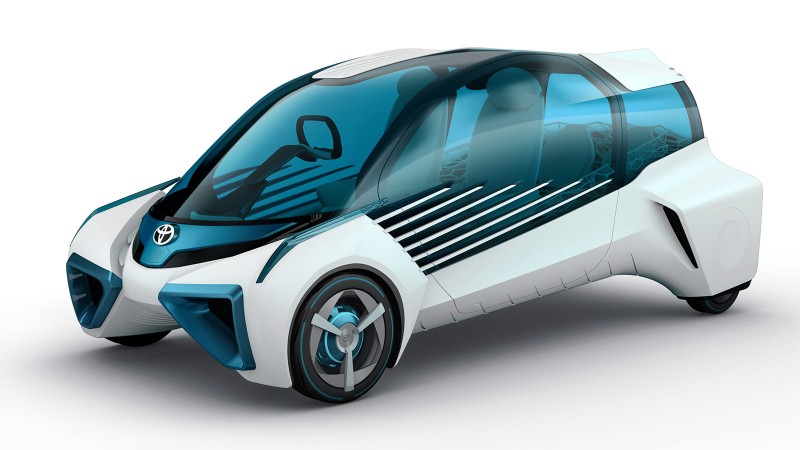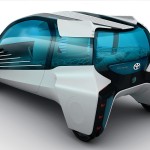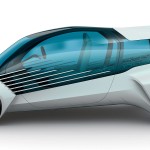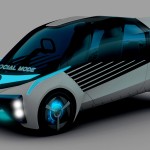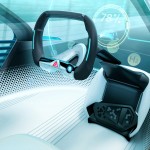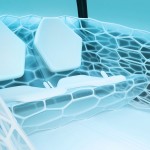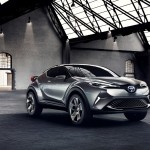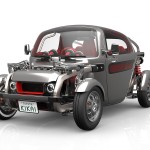Toyota’s Mirai has only just gone on sale, but already Toyota engineers and designers are hard at work producing future concepts to showcase the technology and added possibilities it brings with it.
Introducing the latest concept, the FCV Plus. Designed to explore how a hydrogen fuel cell car can also be used to power other sources, for general use. As well as having its own hydrogen fuel tank, the FCV Plus can generate electricity from hydrogen stored outside the vehicle, so the car can be used to produce power in different locations – at home, at work, or further afield. The idea is to add to the versatility of a fuel cell that can be operated at different locations and with the vehicle acting more like a mobile generator, than a car.
This versatility rings true especially for home country of Japan for Toyota, ever since their Prius hybrids were used to provide power to those without it after the catastrophe at Fukushima. Toyota claim that,
“Compressed hydrogen has a higher energy density than electricity, can be produced from a wide range of raw materials and is easy to store – all qualities that make it a promising future source of energy. Clean hydrogen generation from different primary energy sources will make local, self-sufficient power generation possible, with fuel cell vehicles taking on a new role as power sources within their communities. Toyota’s aim is to give the automobile a new sense of purpose by developing fuel cell vehicles from eco-cars into energy-cars.”
When not in use as transport, the Toyota FCV Plus can share its power generation capabilities with communities, as part of the local infrastructure. The fuel cell stack can be reused as a device to generate electricity, going beyond the traditional functions of a car. However, although in practice this may work well, it would be at the mercy of hydrogen’s cost at the pump as to whether it is beneficial or not – aside from disaster situations or places where power is at a premium or hard to reach.
Unlike the Mirai, the FCV Plus’ fuel cell stack is mounted between the front wheels, with the hydrogen tank located behind the rear seat. In the Mirai, the fuel cell stack is located beneath the front passenger seats. Together with independent in-wheel motors in all four wheels, this allows for a spacious cabin within a compact vehicle body. Concentrating the functional parts of the car at the front and rear creates an ideal weight balance and gives the driver a wide field of vision.
The concept is 3,800mm long, 1,750mm wide and 1,540mm high, with a 3,000mm wheelbase. The distinctive sleek exterior design is supported by a rigid frame in an overall lightweight package.
Toyota will show the FCV Plus at the Tokyo Motor Show 2015 alongside the Toyota S-FR; a small and lightweight two seat sports car, Toyota KIKAI; a concept that shows off the car’s components rather than hiding them away and the new Toyota Prius will receive its Japanese debut too. Lastly, the Toyota C-HR Concept previews a new production compact hybrid crossover that Toyota will unveil next year.
Source; Toyota
